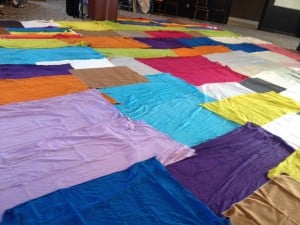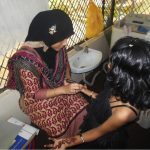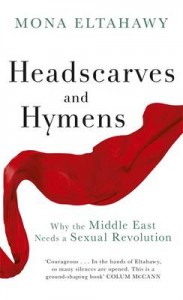Continuing our tradition of sharing reflections on Eid (see our posts from Eid-ul-Adha last year, in two parts, and from Eid-ul-Fitr this year), today we’ll be posting four reflections from Eid last week, written by Eren, Izzie, Krista, and Shireen.

It’s becoming a tradition for me to travel from Montreal to Toronto each Eid. The women’s spaces in mosques here in Montreal aren’t great, with few options for people who want to listen to a khutba (sermon) in English or French (not Arabic) and be able to actually see and hear the imam from the women’s section. After a few disasters, I’ve mostly given up, and happily make the trek to spend Eid with the El-Tawhid Juma Circle in Toronto instead, with the side bonus of getting to hang out with friends and family there, including a few MMW writers! As I wrote when talking about the El-Tawhid Eid prayer last year, it’s a space where our access to the khutba and prayer is not determined by our gender, which for me makes a big difference in my Eid experience.
This year’s Eid-ul-Adha prayer was similar to last year’s in terms of the diverse congregation and inclusive atmosphere, and I love that this inclusivity and equal access has become the new normal in my Eid experiences. What stands out in particular from this year, however, is the khutba. In her reflections on Eid last year, wood turtle wrote that:
“Every year I complain that not enough is done to recognize the importance of Hagar – and every year I am sorely disappointed. I would love to hear a sermon focusing on her, noting that without her sacrifice, faith, ingenuity and leadership, Mecca might not even exist.”
I’ve often shared wood turtle’s feelings on this, and was thrilled when I found out that Hajar actually was the focus of this Eid khutba, delivered by El-Tawhid Juma Circle co-founder El-Farouk Khaki. El-Farouk talked about the story of Hajar, left on her own in the desert, running frantically to find water for her child, and gathering water once the spring of Zamzam appeared. He noted the ways that Eid-ul-Adha honours her sacrifice, and pointed out that the practice of running back and forth between the mountains of Safa and Marwa is an obligatory ritual of the hajj pilgrimage that comes directly from Hajar’s legacy. As he explained, it’s a practice that we should be following not only in the literal sense of running between the two hills:
“Her service and contribution ennobled the Hills of Safaa and Marwah to the status of “among the Sign of God,” and whose quest for water in the face of hopelessness manifests both love (ashk) and faith (imaan) that we must re-enact and exemplify in our performance of faith in our everyday sacrifices.”
Quoting some of Ali Shariati’s work, El-Farouk also spoke about Hajar’s grave, located near the third column of the Kaaba, and the honour that this represents for “a black, female slave.” At the same time, he also pointed out that,
“Ironically, in today’s ‘official version’ of Islam, women require a ‘mahram’ – an adult male – when Hajar (as [alayha salaam, peace be upon her]) had no Mahram, and women are refused the right to run between Safa and Marwa because the ‘authorities’ deem it ‘unbefitting’ a woman, though Hajar (as) ran, and she is exalted by God.”
El-Farouk also looked at the roots of Hajar’s name, which connect to the words for “immigrant” and “migration”:
“The prophet Muhammad (as) is reported to have said, ‘The ideal immigrant is the one who behaved like Hajar.’
The prophet Muhammad’s (as) ideal immigrant is an active agent of social change. An environmentalist who found and conserved water; a single mother who ensured a life and future for her child; an enslaved royal who built a city, and the spiritual mother to billions who had unqualified faith in her Creator for a better tomorrow.
Should we not as believers all think of humanity as the baby Ismail destined for death? To save through commitment, dedication, love, and restless passion as exemplified by our Mother Hajar (as), then and so desperately needed now?”
As a member of the community, I was happy to see women being honoured not only in the physical prayer space but also in the content of the sermon. It was an inspiring khutba, and a powerful tribute to Hajar, a woman whose role in Islam’s history has often been minimised.












